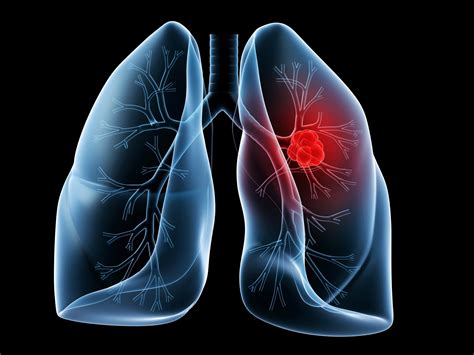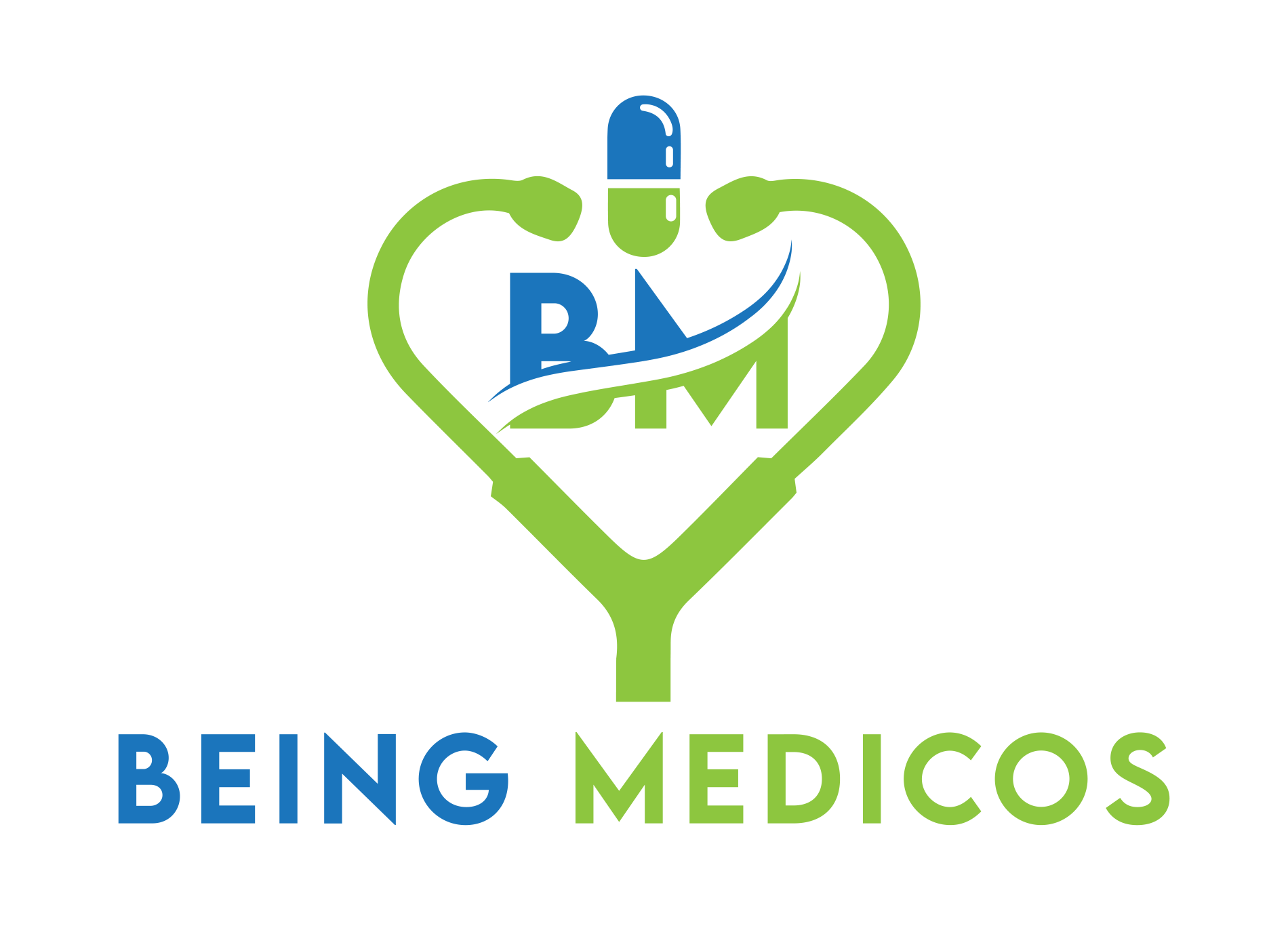Lung Cancer
Introduction
Lung cancer is a type of cancer that begins in the lungs, primarily in the cells lining the airways (bronchi) and parts of the lung used for breathing. It is one of the most common and deadly forms of cancer worldwide. It is typically classified into two main types: non-small cell lung cancer (NSCLC) and small cell lung cancer (SCLC), which differ in their behavior, treatment, and prognosis.

Causes
- Smoking: Cigarette smoking is the leading cause of pulmonary cancer, accounting for about 80-90% of pulmonary cancer cases. The risk increases with the duration and intensity of smoking.
- Secondhand smoke: Exposure to secondhand smoke, also known as environmental tobacco smoke, can increase the risk of lung cancer in non-smokers.
- Radon gas: Radon is a naturally occurring radioactive gas that can accumulate in homes and buildings, and prolonged exposure can increase the risk of cancer.
- Asbestos: Exposure to asbestos fibers, particularly in certain occupational settings, has been linked to an increased risk of cancer in lungs.
- Environmental pollutants: Exposure to certain chemicals and pollutants, such as diesel exhaust, arsenic, and certain types of silica, may contribute to the development of pulmonary cancer.
Risk Factors
- Smoking history: The risk of pulmonary cancer increases with the number of cigarettes smoked per day and the duration of smoking.
- Secondhand smoke exposure: Even brief exposure to secondhand smoke can increase the risk of cancer, especially in non-smokers.
- Personal or family history of lung cancer: Individuals with a personal or family history of lungs cancer may have a higher risk.
- Occupational exposure: Working in certain industries, such as mining, construction, and manufacturing, can increase the risk due to exposure to carcinogens.
- Radiation exposure: Exposure to high levels of radiation, such as from previous radiation therapy or nuclear accidents.
- Chronic lung diseases: Conditions like chronic obstructive pulmonary disease (COPD) and pulmonary fibrosis may increase the risk of developing pulmonary cancer.
Symptoms
- Persistent cough: A new cough that persists or worsens over time can be a symptom of pulmonary cancer.
- Coughing up blood (hemoptysis): Coughing up blood or blood-tinged sputum may indicate the presence of lung cancer.
- Shortness of breath: It can cause shortness of breath or wheezing, especially as the tumor grows and obstructs the airways.
- Chest pain: Pain or discomfort in the chest area, which may worsen with deep breathing, coughing, or laughing, can be a symptom of pulmonary cancer.
- Hoarseness: Changes in voice or hoarseness may occur if the cancer affects the nerves that control the vocal cords.
- Recurring respiratory infections: It can increase the risk of recurrent bronchitis or pneumonia.
- Fatigue and weight loss: Unexplained fatigue and unintentional weight loss may be associated with lung cancer.
Complications
- Metastasis: It can spread (metastasize) to other parts of the body, such as the brain, bones, liver, or adrenal glands, making treatment more challenging.
- Pleural effusion: It can cause fluid to accumulate between the lung and chest wall (pleural effusion), leading to shortness of breath and chest pain.
- Respiratory failure: Advanced lung cancer can obstruct the airways or damage lung tissue, leading to respiratory failure and the need for oxygen therapy or mechanical ventilation.
- Paraneoplastic syndromes: In some cases, lung cancer can cause various systemic effects, known as paraneoplastic syndromes, affecting the nervous system, endocrine system, or other organs.
Differential Diagnosis
- Pneumonia: Both lung cancer and pneumonia can cause cough, shortness of breath, and chest pain, but pneumonia typically has a more sudden onset and may be accompanied by fever.
- Chronic obstructive pulmonary disease (COPD): COPD can cause persistent cough, wheezing, and shortness of breath, but it is a chronic condition without the presence of a lung mass or tumor.
- Tuberculosis: Tuberculosis can cause chronic respiratory symptoms similar to lung cancer, but it is an infectious disease caused by a specific bacterium.
- Bronchiectasis: This chronic condition can cause persistent cough, wheezing, and mucus production, but it does not typically involve a lung tumor or mass.
- Pulmonary embolism: A blood clot in the lungs can cause chest pain and shortness of breath, mimicking some symptoms.
Preventions
- Smoking cessation: Quitting smoking is the most effective way to reduce the risk of developing lung cancer, and it can also improve the prognosis for those already diagnosed with lung cancer.
- Avoiding secondhand smoke: Minimizing exposure to secondhand smoke, particularly in the workplace and public spaces, can reduce the risk of lung cancer in non-smokers.
- Radon testing and mitigation: Testing for and reducing high levels of radon gas in homes and buildings can help prevent exposure to this known carcinogen.
- Occupational safety measures: Implementing appropriate safety measures, such as proper ventilation and personal protective equipment, can help reduce exposure to carcinogenic substances in the workplace.
Diagnosis
- Imaging tests: Chest X-ray and computed tomography (CT) scans are commonly used to detect lung masses or abnormalities that may indicate lung cancer.
- Sputum cytology: A sample of sputum (mucus coughed up from the lungs) can be examined under a microscope for the presence of cancerous cells.
- Bronchoscopy: This procedure involves inserting a small camera (bronchoscope) through the mouth or nose and into the airways to examine the lungs and collect tissue samples (biopsy) for further analysis.
- Needle biopsy: A thin needle is inserted through the chest wall to obtain a sample of lung tissue or fluid for examination.
- Molecular testing: In some cases, molecular tests may be performed on tissue samples to identify specific genetic mutations or biomarkers that can guide treatment decisions.
Treatments
The treatment is depends on various factors, including the type and stage of cancer, the patient’s overall health, and the presence of specific genetic mutations or biomarkers. Treatment options may include:
- Surgery: For early-stage lung cancer confined to a small area of the lung, surgical removal of the tumor or affected lobe (lobectomy) or the entire lung (pneumonectomy) may be an option.
- Radiation therapy: High-energy radiation beams are used to kill cancer cells or shrink tumors. Radiation therapy may be used alone or in combination with other treatments.
- Chemotherapy: Chemotherapy drugs are used to kill cancer cells throughout the body. They may be administered intravenously or orally, depending on the specific drugs used.
- Targeted therapy: These medications target specific genetic mutations or proteins found in cancer cells, disrupting their growth and spread. Targeted therapies are often used in combination with other treatments.
- Immunotherapy: This emerging treatment approach uses medications that boost the body’s immune system to recognize and attack cancer cells.
- Palliative care: For advanced or metastatic lung cancer, palliative care aims to relieve symptoms and improve quality of life through various supportive measures.
Important Key Points
- Lung cancer is a type of cancer that begins in the lungs, primarily in the cells lining the airways (bronchi).
- The leading cause is smoking, accounting for about 80-90% of lung cancer cases.
- Other risk factors include secondhand smoke, radon gas exposure, asbestos, pollution, and existing lung diseases.
- Common symptoms are persistent cough, coughing up blood, shortness of breath, chest pain, hoarseness, fatigue, and unexplained weight loss.
- Lung cancer can metastasize (spread) to other parts of the body like the brain, bones, and liver.
- Differential diagnosis is crucial to rule out conditions like pneumonia, COPD, tuberculosis, and bronchiectasis.
- Preventive measures include smoking cessation, avoiding secondhand smoke, radon testing, and workplace safety.
- Diagnosis involves imaging tests (X-rays, CT scans), sputum cytology, bronchoscopy, biopsy, and molecular testing.
- Treatment depends on cancer type/stage but may involve surgery, radiation, chemotherapy, targeted therapy, immunotherapy.
- Early detection through screening and prompt treatment offer the best chances for improving survival rates.
Note: This is a general overview, and it’s always best to consult with a healthcare professional for personalized medical advice and treatment.
When to See a Doctor ?
- See a doctor promptly if you experience a new, persistent cough that lasts for more than 2-3 weeks and doesn’t go away. An unexplained, lingering cough can be an early sign of lung cancer.
- Make an appointment if you cough up blood or rust-colored phlegm/mucus. Coughing up blood (hemoptysis) is a concerning symptom that requires medical evaluation.
- Seek medical attention for shortness of breath, wheezing, or chest pain that is new, persistent, and doesn’t have an obvious cause. These respiratory symptoms could indicate lung cancer.
- See a doctor about hoarseness or voice changes that persist for more than 2 weeks, as lung cancer can affect the vocal cords.
- Consult a physician if you experience unexplained weight loss, fatigue, loss of appetite, or general feelings of illness that don’t improve over time.
- If you are a current or former smoker, it’s especially important to discuss any new respiratory symptoms promptly with your doctor due to the increased lung cancer risk.
- Those with a personal or family history of lung cancer should be vigilant about reporting potential symptoms to their physician.
